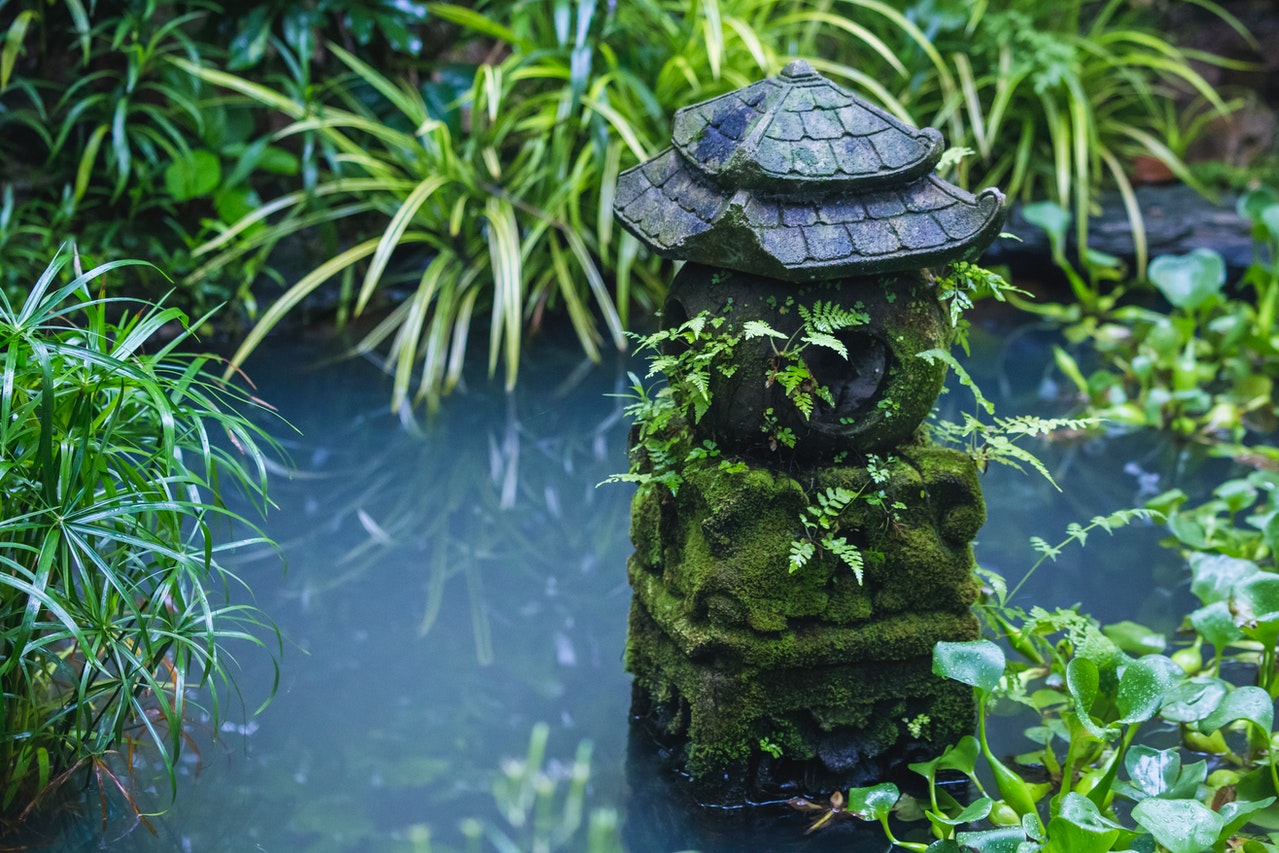How to Create a Small Garden Pond
April, 2022 |No matter how small your garden is, it’s always possible to bring the peace and serenity of water into your space. If your outdoor space is a balcony, or a yard smaller than 10 square feet, creating a small container pond could be a more space-efficient option.
However, if you’ve got at least 1m square of available ground space that you can dig, here’s a guide on how to create a small garden pond!
What you’ll need…
- Pond liner (or a watertight container that can be sunk into the ground).
- Spade and/or trowel
- Loose gravel, pebbles, and a few bricks or rocks.
- Plants! See our recommendations below.

Where to position a small pond
Firstly, you need to decide where to position your pond. A few factors to consider are sunlight, shade, and access.
- Ideally, you need around 1 foot of space around a pond edge. Away from fencing or walls. This allows you to plant taller marginal plants at the edges and create a more natural-looking environment.
- Ponds benefit from sunlight but not too much. So place your pond in an area that isn’t in full sun all day, but an area where it benefits from a few hours of sunlight. If your space is shady, you can still create a beautiful pond, however, when planting, you need to choose shade-loving pond plants.
Digging a pond
If you’re digging your own pond shape, make sure to create layered levels to give plants different heights. Aim for a depth of at least 1-2ft deep, as a shallow pond could evaporate.
Once you have your shape, layers and depth sorted, you’ll need to line it with a pond liner. You could also find a large container and dig a hole so it sits at ground level too.

Fill it with water
If you have a rainwater tank or water butt, use this to fill your pond. You can use tap water to fill your pond quickly. But rainwater is more natural and beneficial to wildlife and pond plants.
Adding rocks and pebbles
To hide any exposed pond liner you can place gravel and pebbles around the pond edges. Create a sloped edge on one side of the pond to create a shallow area that allows wildlife like birds and hedgehogs to drink.

As you’re placing plants in the next step, you may find it useful to have some bricks or wide rocks on hand too. These can be used if a plant seems too deep. For example, a water lily with short leaf stems might be too deep under the surface, so you can place its pot on a brick to raise it up.
As the water lily leaves become longer you can eventually remove the brick and allow the plant to sit at the bottom of the pond.
Which plants to choose
Even 2 or 3 plant types can create a fantastic-looking pond. There are 3 main categories of pond plants for you to choose from, plus surrounding plants that can sit around the edges. The three pond plant categories are: marginal plants, oxygenators (deep water plants), and floating plants. Try choosing one from each to create a lovely layered look.

Surrounding plants
These are moisture-loving plants that don’t sit in the water, but around the edges of your pond. Some ideal plants to surround your pond include…
- Meadowsweet (Filipendula ulmaria)
- Hostas
- Golden Creeping Jenny (Lysimachia nummularia ‘Aurea’)

Marginal plants
With an underwater planting depth of 10-20cm, these plants work well at the shallow edge of your pond. Some of the best marginal plants for small ponds are…
- Flowering rush (Butomus umbellatus)
- Marsh marigold (Caltha palustris)
- Water iris

Oxygenator plants
Often known as deep water plants. It’s important to include oxygenating pond plants to keep the water healthy and full of oxygen. They also provide vital cover for fish, newts, and frogs.
- Water violet (Hottonia palustris)
- Hornwart (Ceratophyllum demersum)
- Eel grass (Vallisneria gigantea)

Floating plants
Adding floating plants to your small pond brings lots of benefits. They help to keep underwater wildlife shielded from predators and keep water temperatures cool in summer. They can also prevent fast-growing oxygenator plants from taking over. Plus, they look good too!
- Lilies: Yellow pond lily (Nuphar lutea) or pink water lily (Nymphaea odorata ‘Firecrest’).
- Floating water moss (Salvinia natans)
- Water hyacinth (Eichhornia crassipes)

Choose native plants wherever possible, as these are more likely to survive the extremes of the climate you live in. To keep plants contained you can place them in the pond within their pots. Oxygenator plants can grow quickly, so containing the roots in a pot is a great way to control them.
Ongoing pond care
Keep an eye on the amount of pond weed that grows. Too much can block sunlight and stop underwater plants from photosynthesizing. You can use a pond net to remove this, or even your hand if your pond is quite small.
Other marginal plants may need pruning back too. Water irises can multiply quickly. Also, make sure your autumn to do list includes a reminder to prep your small pond for winter.
Featured Image | Photo by Jimmy Chan





